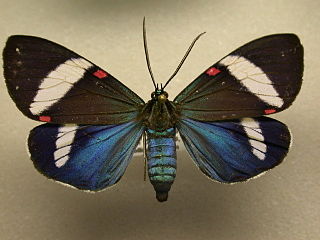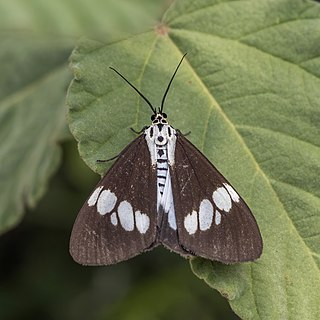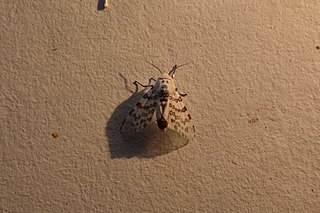
Papilio is a genus in the swallowtail butterfly family, Papilionidae, as well as the only representative of the tribe Papilionini. The word papilio is Latin for butterfly.

Rogério Mücke Ceni is a Brazilian football manager and former player who was most recently the head coach of Brazilian Série A club Flamengo. He is considered one of the all-time greatest Brazilian goalkeepers and is recognised by the International Federation of Football History & Statistics as the goalkeeper to have scored the most goals in the history of football.

Nyctemera is a genus of tiger moths in the family Erebidae first described by Jacob Hübner in 1820. The genus includes the species Nyctemera annulata and Nyctemera amica, which are closely related and are able to interbreed.

Battus is a New World genus of butterflies that are usually found around pipevine plants. The caterpillars feed off the poisonous pipevines, making the insects poisonous themselves; they taste very bad to ward off predators. Since birds avoid these butterflies, other swallowtail species mimic their coloration. The common North American species are Battus polydamas and Battus philenor.

Danaus, commonly called tigers, milkweeds, monarchs, wanderers, and queens, is a genus of butterflies in the tiger butterfly tribe. They are found worldwide, including North America, South America, Africa, Asia, Indonesia and Australia. For other tigers see the genus, Parantica.

Hypocrita is a genus of tiger moths in the family Erebidae. The genus was erected by Jacob Hübner in 1807.

Libytheana is a genus of nymphalid butterflies in the snout butterfly subfamily, Libytheinae.

Eudocima is a genus of moths of the family Erebidae first described by Gustaf Johan Billberg in 1820.

Ophiusa tirhaca, the green drab, is a moth of the family Erebidae. The species was first described by Pieter Cramer in 1777. It is found in southern Europe, Africa, Australia and the southern parts of Asia.

Utetheisa lotrix, the salt-and-pepper moth or crotalaria moth, is a moth of the family Erebidae. The species was first described by Pieter Cramer in 1777. It is found in most of the Old World tropics.

Nyctemera lacticinia, the common nyctemera, is a moth of the family Erebidae. The species was first described by Augustus Radcliffe Grote in 1873. It is found in Japan, from the Oriental tropics of India, Sri Lanka, Myanmar to Taiwan, Peninsular Malaysia and Borneo.

The Nyctemerina are a subtribe of woolly bear moths in the family Erebidae.

Gonodonta sicheas is a moth of the family Erebidae first described by Pieter Cramer in 1777. It is found in Mexico, Guatemala, from Panama to Colombia, Venezuela, Ecuador, Peru, Brazil and on the Antilles. It is also found in the southern United States, including Florida and Texas.

Hypercompe icasia is a moth of the family Erebidae first described by Pieter Cramer in 1777. It is widely distributed in South America and is also found on Martinique, Guadeloupe, Saint Martin, Dominica, St. Kitts, Nevis, St. Thomas and Puerto Rico.













